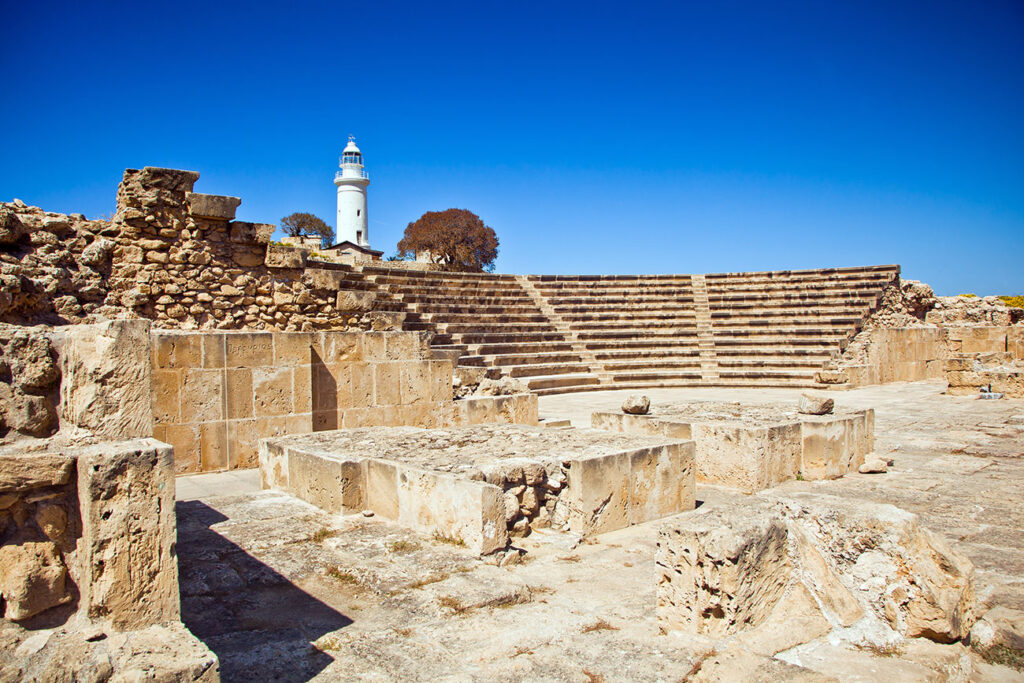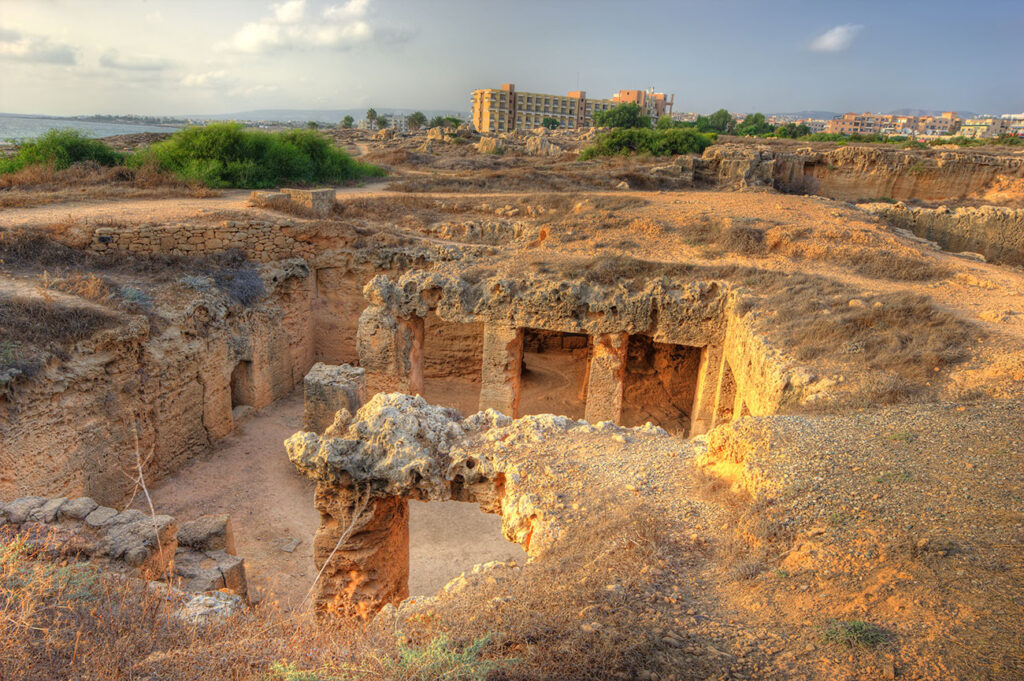Cyprus Attractions
Cyprus, with its rich tapestry of history, stunning landscapes, and vibrant culture, is dotted with numerous must-see tourist attractions. Here’s a curated list of some of the top spots that showcase the island’s diverse appeal:

1. Paphos Archaeological Park
This UNESCO World Heritage site includes remarkable historical ruins from prehistoric times to the Middle Ages, but it’s most famed for its Roman mosaics in the Houses of Dionysos, Theseus, Aion, and Orpheus.

2. Tombs of the Kings
Another UNESCO site in Paphos, this large necropolis dating back to the 4th century BC is known for its underground tombs carved out of solid rock, many of which are ornately decorated.

3. Ayia Napa Monastery
This serene, medieval monastery is located in the heart of Ayia Napa. Surrounded by a high wall, it’s a peaceful oasis contrasting with the town’s lively beach and nightlife scene.

4. Cape Greco
Situated between Ayia Napa and Protaras, this coastal national park offers breathtaking sea views, natural trails, and a chance to explore sea caves and snorkel in crystal-clear waters.

5. Kykkos Monastery
Located in the Troodos Mountains, this is one of Cyprus’s wealthiest and most lavish monasteries, adorned with gold icons and mosaics, and home to a museum.

6. Troodos Mountains
Ideal for hiking, skiing (in winter), and exploring traditional villages. Don’t miss the UNESCO-listed painted churches scattered throughout the area.

7. Kourion
An impressive archaeological site located on a hillside overlooking the sea near Limassol. Key features include a well-preserved Greco-Roman theatre, Eustolios House, and early Christian basilica ruins.

8. Larnaca Salt Lake
A stunning natural habitat that attracts flocks of flamingos in the winter. Nearby is the Hala Sultan Tekke mosque, one of Islam’s holiest sites.

9. Nicosia’s Old City
Enclosed by Venetian walls, the old city is a mix of history, culture, and contemporary life. Key sites include the Cyprus Museum, the Ledra Street crossing point, and various historic churches and mosques.

10. Limassol Castle
Located in the heart of Limassol’s old town, this castle houses the Cyprus Medieval Museum and offers insights into the island’s history from the Byzantine period to the 19th century.

11. Akamas Peninsula
Known for its natural beauty, this area offers hiking trails, the famous Baths of Aphrodite, and the Lara Bay Turtle Conservation Station, which protects green and loggerhead turtles.

12. Choirokoitia
One of the most important prehistoric sites in the eastern Mediterranean, this Neolithic settlement is also a UNESCO World Heritage site, providing insights into early human habitation on the island.
Cyprus
These attractions only scratch the surface of what Cyprus has to offer. From its rich historical layers to its stunning natural landscapes and vibrant modern culture, Cyprus is a destination that caters to a wide range of interests and activities, ensuring a memorable experience for every visitor.

